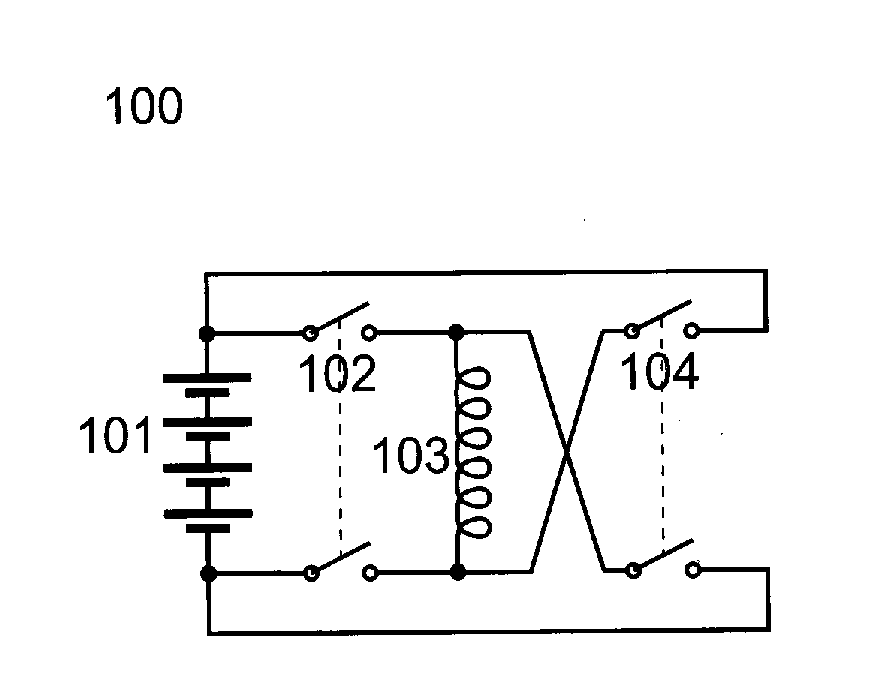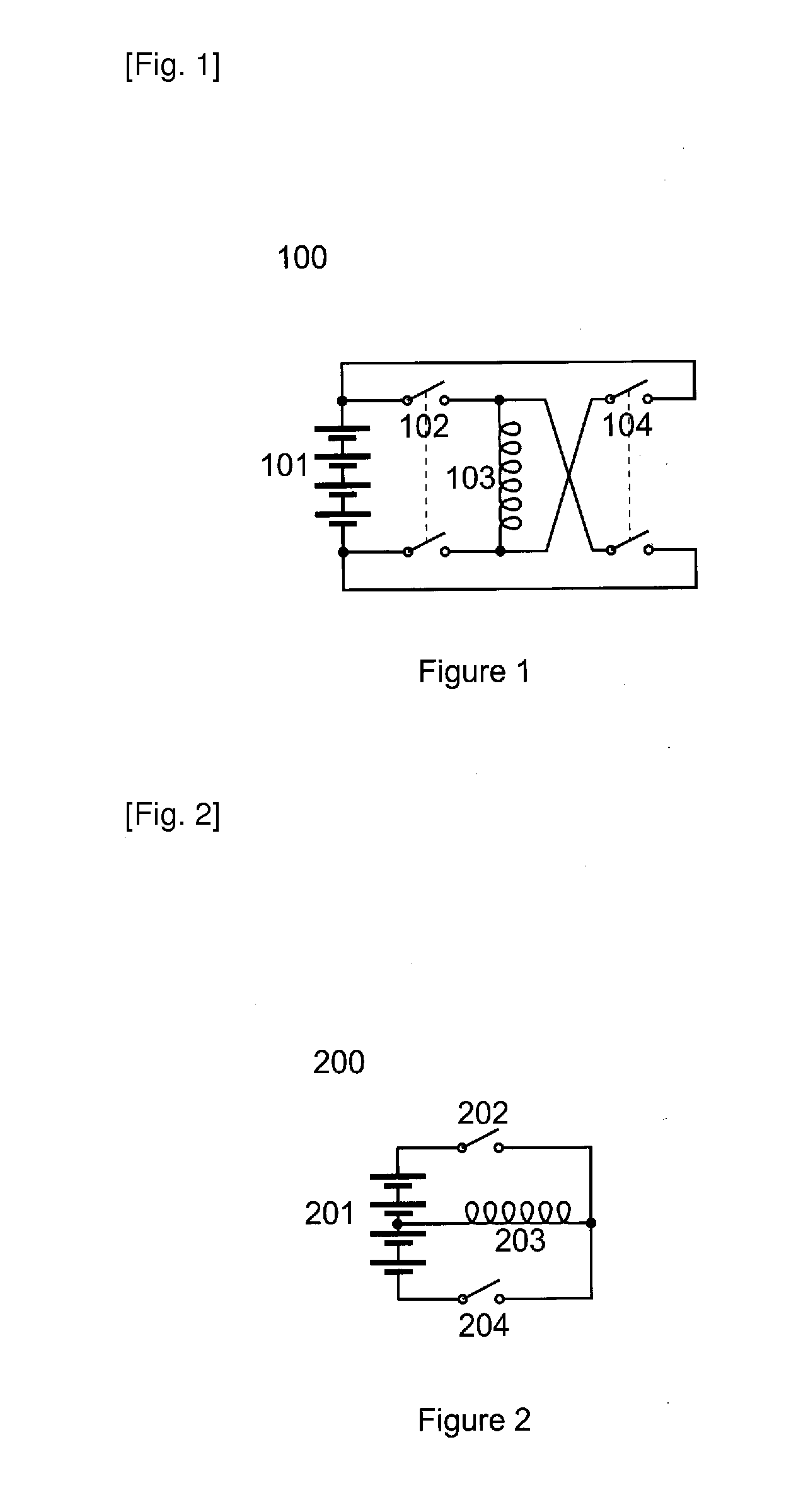Self Heating Battery System
a self-heating, battery technology, applied in the direction of electrochemical generators, electrical devices, electric vehicles, etc., can solve the problems of large amount of heat generated, inability to quickly change the voltage output of the inductor, and inability to do, so as to increase the energy delivering ability of the battery, increase the switching rate, and increase the effect of energy supply to external loads
- Summary
- Abstract
- Description
- Claims
- Application Information
AI Technical Summary
Benefits of technology
Problems solved by technology
Method used
Image
Examples
Embodiment Construction
[0023]Referring to FIG. 1, there is shown one embodiment of the battery self heating system (100) comprising a battery (101) connected to a magnetic storage element (103) having first connection point and second connection point. The magnetic storage element (103) is connected to the battery (101) by means of a first double-pole-single-throw switch (102) which allows current to flow through the inductor from the first connection point to the second connection point (using a simplified positive to negative model of current flow). The first switch (102) will be opened when the current through the magnetic storage element (103) exceeds a set-point, or when the voltage at the battery (101) falls below a set-point. After the first switch (102) opens, then a second double-pole-single-throw switch (104) closes. This allows the energy in the magnetic storage element (103) to flow back into the battery (101). It is important to note that the characteristic operation of a magnetic storage ele...
PUM
 Login to View More
Login to View More Abstract
Description
Claims
Application Information
 Login to View More
Login to View More - R&D
- Intellectual Property
- Life Sciences
- Materials
- Tech Scout
- Unparalleled Data Quality
- Higher Quality Content
- 60% Fewer Hallucinations
Browse by: Latest US Patents, China's latest patents, Technical Efficacy Thesaurus, Application Domain, Technology Topic, Popular Technical Reports.
© 2025 PatSnap. All rights reserved.Legal|Privacy policy|Modern Slavery Act Transparency Statement|Sitemap|About US| Contact US: help@patsnap.com


